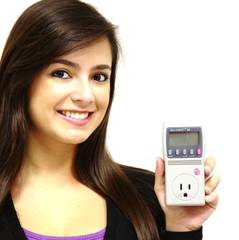
There are many ways one can lower energy bills. The key is identifying where a home is most energy inefficient. This contributing factor could be one of many different deficiencies that are often relatable to a particular region's climate or how certain homes were built at a certain time. For example, older homes were built with very little or no insulation, making the contributing factor for high energy bills the building envelope. In older climates where heating systems are in demand for most of the year, well insulated windows walls and doors are often cost effective energy upgrades.
While heating and cooling loads drive up energy costs there are other common energy deficiencies that are often overlooked. A DIY home energy audit can help you determine what these are. While aspects of an energy audit relating to the building envelope are pretty straight forward, finding sources of inefficient lighting technology is a little less intuitive.
While heating and cooling loads drive up energy costs there are other common energy deficiencies that are often overlooked. A DIY home energy audit can help you determine what these are. While aspects of an energy audit relating to the building envelope are pretty straight forward, finding sources of inefficient lighting technology is a little less intuitive.
When examining an electric bill, one will notice that the usage is measured by Kilowatt hours. Calculating usage can be tricky, and in some cases even impossible to do accurately. However, there is one tool that is sure to measure your electrical usage of individual electrical components in a home. This tool is the Kill-a-Watt Electricity usage monitor from P3 International. For fewer than 20 dollars, one can measure the usage of their home appliances and lighting
with this tool.
The benefit of knowing how much energy a light source consumes in a typical day is beneficial because it can be directly translatable to the amount of money owed on an energy bill. Simply multiply the number of kilowatt hours off of the usage meter by the local utility rate. Right now, utility rates average around $0.11/kilowatt-hour.
With this knowledge it is very simple to see what lighting consumes the most energy and where to make energy efficient upgrades. If a homeowner does a DIY energy audit and sees that certain lights are left on more during the day
unnecessarily; they can employ the use of an occupancy sensor or vacancy sensor light switch in order to save more money on their energy bills. Residential occupancy sensor light switches or ceiling mounted occupancy sensors combined with LED lighting are more affordable than many people realize. Most importantly energy efficient lighting supplies are a very financially smart choice because they never need to be replaced and will provide continually growing energy savings over their lifetime.
with this tool.
The benefit of knowing how much energy a light source consumes in a typical day is beneficial because it can be directly translatable to the amount of money owed on an energy bill. Simply multiply the number of kilowatt hours off of the usage meter by the local utility rate. Right now, utility rates average around $0.11/kilowatt-hour.
With this knowledge it is very simple to see what lighting consumes the most energy and where to make energy efficient upgrades. If a homeowner does a DIY energy audit and sees that certain lights are left on more during the day
unnecessarily; they can employ the use of an occupancy sensor or vacancy sensor light switch in order to save more money on their energy bills. Residential occupancy sensor light switches or ceiling mounted occupancy sensors combined with LED lighting are more affordable than many people realize. Most importantly energy efficient lighting supplies are a very financially smart choice because they never need to be replaced and will provide continually growing energy savings over their lifetime.
 RSS Feed
RSS Feed